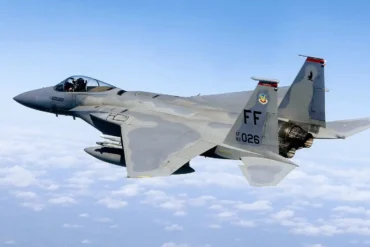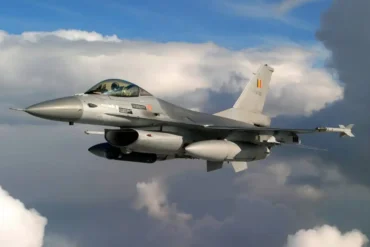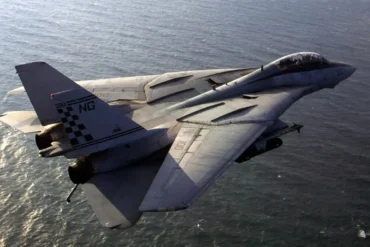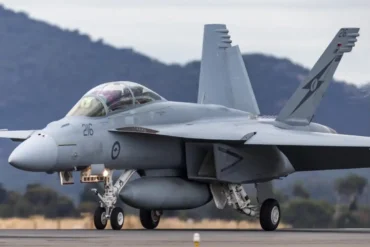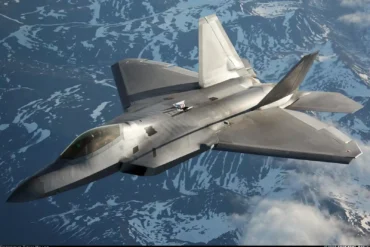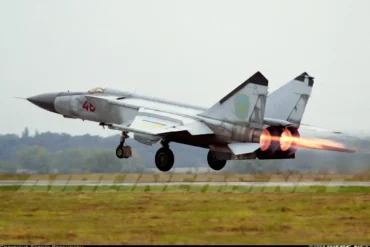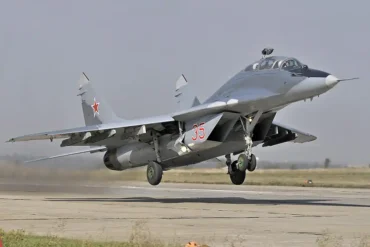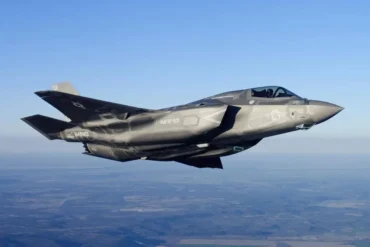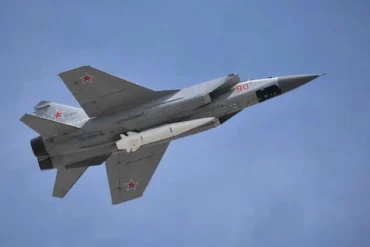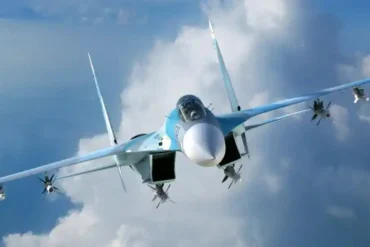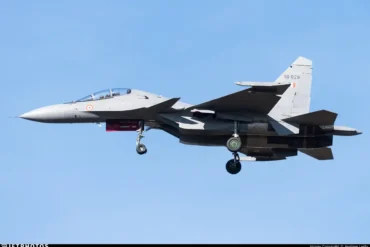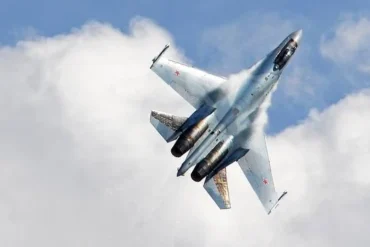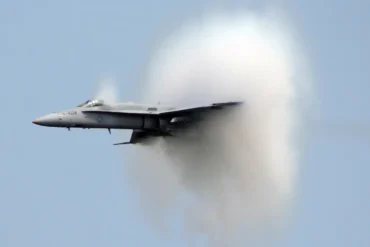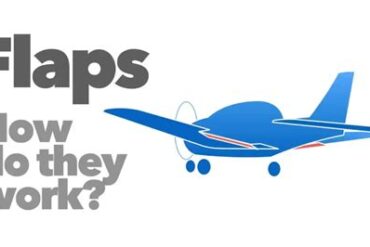The Su-57, Russia’s answer to the modern demands of air superiority and advanced stealth capabilities, stands as one of the most remarkable feats in military aviation. Often dubbed as the “Felon” by NATO, the Su-57 showcases cutting-edge technology, aerodynamics, and capabilities that make it a serious contender in the world of fifth-generation fighter aircraft. In this article, we will explore the unique characteristics of the Su-57, breaking down the fascinating facts that surround this advanced fighter jet.
The NATO Codename: ‘Felon’ and Its Implications
One of the first things that come to mind when discussing the Su-57 is its NATO codename, “Felon”. This codename follows the tradition set by earlier Russian aircraft, such as the Su-47 “Fishpot” and Su-17 “Fitter”. The use of the letter “F” for Russian jets has become a characteristic naming convention. However, the Russian military has consistently disagreed with the “Felon” designation, as it does not reflect the true technical capabilities of the aircraft. For them, the name “Felon” fails to capture the complexity and advanced nature of the Su-57.
While the NATO codename might seem negative, it is not uncommon for Western organizations to use such monikers to characterize the adversary’s technology. In this case, “Felon” likely refers to the fighter’s threat potential in air-to-air combat situations, though the aircraft’s performance far exceeds the implications of such a name.
Advanced Composite Materials and Speed Trade-offs
The Su-57 is designed with a focus on supercruise capability, meaning it can maintain supersonic speeds without using afterburners, a feature critical for reducing the aircraft’s radar signature and fuel consumption. To achieve this, the Su-57 incorporates composite materials that constitute 24% of its total structural weight. These materials cover 70% of the aircraft’s outer surface, allowing for a balance between stealth and performance.
However, when compared to other fifth-generation jets, such as the F-35, which uses 36% composite materials, the Su-57’s ratio is lower. This trade-off is a result of the aircraft’s emphasis on achieving high-speed flight, particularly the Mach 2+ supercruise speed. The heat stability of composite materials at such high velocities is a limiting factor, dictating a careful compromise between speed and stealth.
Aerial Acrobatics: The Su-57’s “Ballet in the Sky”
With vector thrust engines and an all-moving tail design, the Su-57 is a true marvel of aerodynamics. This enables the aircraft to execute advanced maneuvers, such as the famous “Pugachev’s Cobra” and the “Falling Leaf” maneuver, both of which involve extreme angles of attack and tight turns. Such performances have earned the Su-57 the affectionate nickname of the “Ballet Dancer of the Skies” among aviation enthusiasts.
These moves are not just for show—they are tactical advantages in air combat. The Su-57 can rapidly change direction, evade missiles, and quickly close the gap with enemy aircraft. Its agility is a key feature that sets it apart from its counterparts in the fifth-generation fighter class.
Automated Systems: The “Second Pilot”
The Su-57 is a single-seater, but its design includes an advanced automation system that performs the functions of a “second pilot.” This system is capable of handling flight controls, sensor data integration, and tactical decisions—allowing the pilot to focus exclusively on mission-critical tasks. This autonomous support system is designed to improve operational efficiency and reduce pilot workload, enabling the pilot to react more swiftly to changes in the combat environment.
The advanced flight control system enhances the pilot’s ability to make tactical decisions in real-time by managing several complex processes simultaneously. This is particularly beneficial in combat situations where split-second decisions are crucial for survival and success.
Collaborative Combat: The Su-57 and Its Drone Wingman
In an exciting development, the Su-57 was paired with the S-70 “Hunter” drone in a historic flight in 2019, marking the beginning of manned-unmanned collaboration in military aviation. This collaboration allows the Su-57 to work in tandem with drones, enhancing its combat capabilities and reducing the risks associated with dangerous missions.
The Hunter drone is capable of performing high-risk tasks such as electronic warfare, decoying, and suppression of enemy air defense systems. By delegating these tasks to a drone, the Su-57 reduces the pilot’s exposure to danger and enhances the overall mission success rate. This human-drone synergy is a glimpse into the future of aerial combat, where the combination of advanced piloting and unmanned capabilities will redefine the battlefield.
Weapon Bay Controversy: Stealth or Compromise?
One of the most talked-about features of the Su-57 is its internal weapon bays, designed to maintain its stealth profile. The Kh-59MK2 stealth cruise missile was the first weapon to be tested inside the aircraft’s internal bays during a demonstration in Syria in 2018. However, critics raised concerns about the size of the gaps between the weapon bay doors, questioning the aircraft’s overall stealth effectiveness.
The apparent imperfections in the weapon bay design led to a debate about whether the Su-57 can truly rival the stealth capabilities of the American F-22 and F-35 fighters, whose weapons are housed in more precisely engineered bays. However, despite these critiques, the Su-57 continues to prove itself as a formidable combat aircraft, with its advanced avionics and aerodynamic design playing crucial roles in its overall effectiveness.
Export Success: Algeria and Beyond
After years of speculation and anticipation, the Su-57 finally made its first successful export sale to Algeria, which is set to receive the first batch of Su-57s in 2025. This marks a significant milestone for Russia’s military aviation industry, as the Su-57 was previously considered exclusively for domestic use. The deal has attracted global attention, and other countries are expected to follow suit in the future, potentially altering the balance of power in global air superiority.
The Algerian deal underscores the Su-57’s growing recognition as a formidable fifth-generation fighter, with its combination of stealth, speed, and advanced systems making it a sought-after asset for foreign militaries.
Engine Technology: A Leap Forward
The Su-57 is equipped with the “Product 30” engine, a new-generation powerplant that offers 18 tons of thrust, an improvement over the previous AL-41F1 engine, which provided 14.5 tons. This increase in thrust significantly enhances the aircraft’s supercruise and maneuverability. The new engine also features a higher thrust-to-weight ratio—greater than 10, allowing the Su-57 to accelerate faster and perform high-G maneuvers with ease.
Moreover, the Product 30 engine incorporates advanced technologies that reduce the aircraft’s infrared signature, further bolstering its stealth capabilities.
Challenges and Future Enhancements
The Su-57’s development has not been without its challenges. Early prototypes of the aircraft were criticized for their rough manufacturing quality, with visible imperfections in the aircraft’s skin and rivet protrusions. These early issues, however, were addressed in later models, and the aircraft has been undergoing continuous refinement to improve its aerodynamic efficiency and production quality.
Future upgrades for the Su-57 include a two-seat variant, voice-control systems, and real-time structural health monitoring. These enhancements will further bolster the aircraft’s capabilities, making it a highly versatile platform in the skies.
Legacy of Soviet Aviation: The Su-57’s Design Lineage
The design of the Su-57 carries with it the legacy of Soviet aviation. It continues the tradition of the Su-27 family, incorporating elements such as the central lifting body layout that offers excellent aerodynamic efficiency and stability. The Su-57’s design also includes stealth coatings and a digitized cockpit, integrating the best aspects of both traditional Russian aircraft design and modern fifth-generation technology.
Referred to by many as the spiritual successor to the Su-27 family, the Su-57 represents a significant leap forward in Russian fighter design, combining the legacy of Soviet engineering with 21st-century technological advancements.
Conclusion: A World-Class Fighter
The Su-57 is a formidable fighter in every sense of the word. From its stealth capabilities and aerodynamic design to its advanced avionics and engine performance, the Su-57 is built to dominate in the modern age of aerial warfare. While it has faced some challenges, its continuing development promises to elevate Russia’s position in the field of air combat.
With growing international interest and ongoing upgrades, the Su-57 is poised to become a game-changer in the skies, proving that Russia’s aviation industry is capable of competing on the world stage with the most advanced fighters in existence.

